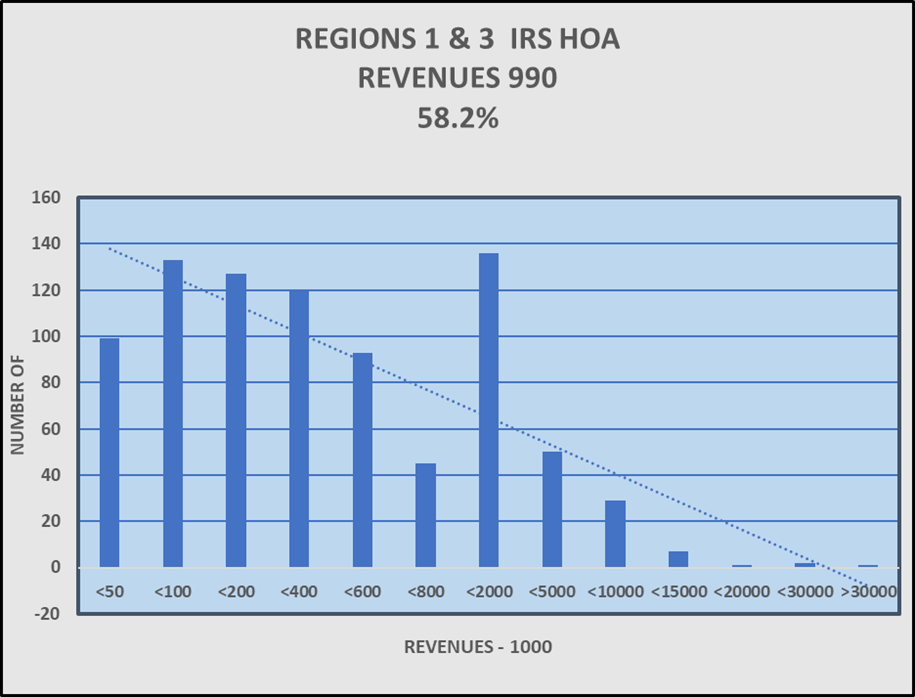In this post I will not be discussing CAI’s dominance and influence on HOA-Land, its legalities, environment or culture, but setting the CAI record straight.
All that I now about HOAs I learned from CAI,
from its polls, surveys, and fact sheets going back as far as 2005. All of which revealed some 70% plus happy and contented homeowners in their land of milk and honey.
I have been concerned about several issues not addressed by CAI’s findings, one of which was the distribution — number of HOAs in each category by size — according to population, by preference, or by revenues as used in this study.

The data for the above charts was taken from the extensive IRS EO BMF files[1] (over 1.8 million entries) and massaged using EXCEL. (The slanting line is the downward trendline showing fewer and fewer HOAs as their siz increases). It is a list of all current tax exempt organizations from which coded ‘homeowners associations’ were selected. Only 2 of the 3 Regions (representing 58.2%) were included in my research. Only a miniscule 843 organizations classified as a 501(c)4 social welfare organization (SWO) were found meeting the 5 applicable sub-designations HOAs.
The source of the IRS database came from mandated annual 990 tax filings, signed and certified like any other tax filing; unlike responses to polls and surveys. It is revealing that there are just 10.7% large-scale[2] HOAs (LSA) according to CAI’s definition, of all those SWOs on record and where CAI is most interested — it’s where the money is.
What this tells me is that of the 351,000 HOAs in America, as claimed by CAI, these social welfare HOAs are “sub-atomic” dots in the playing field, either because they don’t care, they gain nothing so why file complex 200+ page forms, or it just doesn’t apply to them. It seems only relevant to the larger moneyed HOAs that can gain a little tax benefit from telling the IRS that they really do social welfare work, when the common boilerplate CC&Rs do not indicate such activities for these private membership, contractual subdivisions.
This emphasis on LSA becomes very meaningful when you take a broader perspective and step back away from the “trees” so you can see the “ugly forest” that CAI doesn’t want you to see. In addition to the above findings on SWOs and LSA, and the extent of CAI’s presence and influence on HOA boards,[3] the ugly HOA forest is exposed.
Until CAI has been held accountable and made to answer for its conduct, advocates will continue to spin wheels and getting very little accomplished.

References
[1] Exempt Organizations Business Master File Extract (EO BMF). (May 10, 2021).
